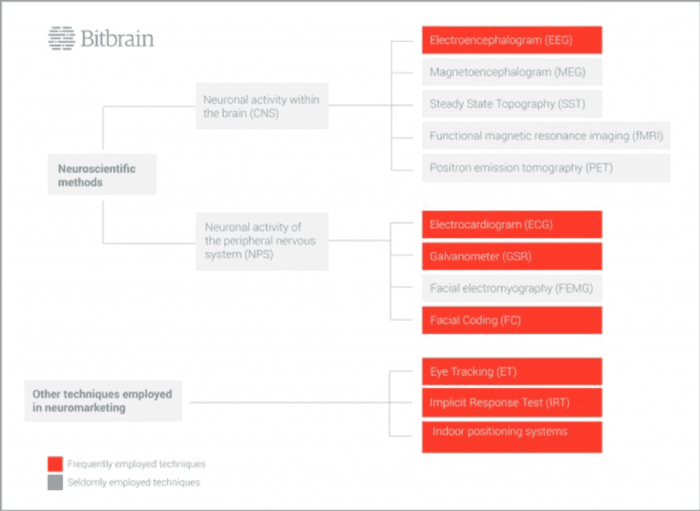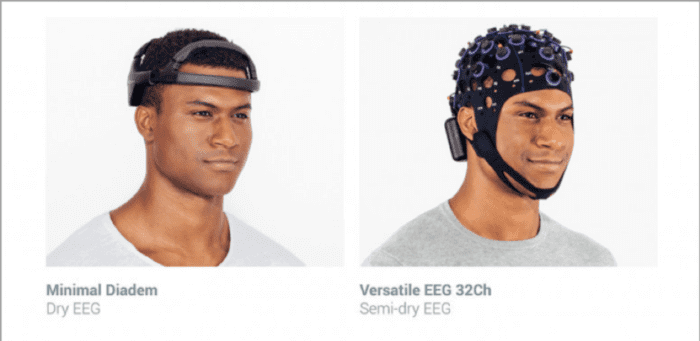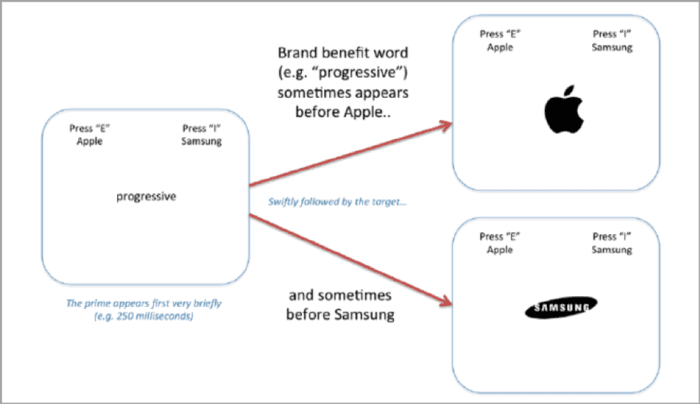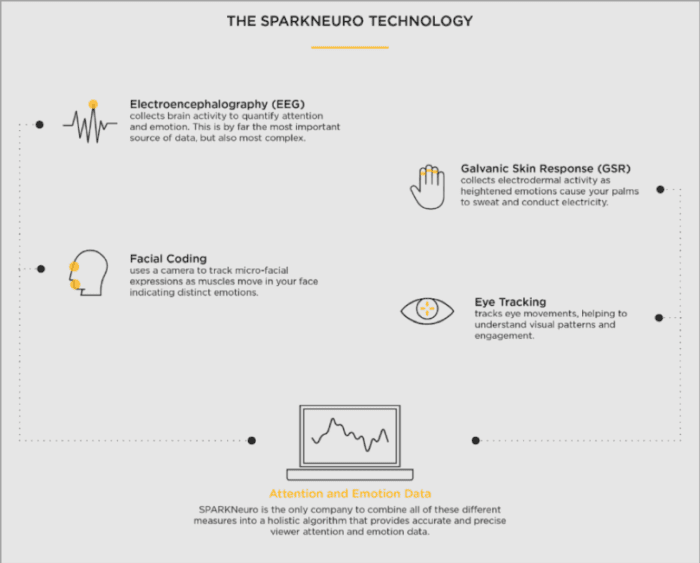There’s no more direct source when it comes to customer research than the human brain and the physiological signals it gives out as it experiences things
One truism that I’ve learned over my years in digital marketing: the closer to the ‘source’ of what you’re measuring, the better data you’ll get. When it comes to customer research, there’s no more direct source than the human brain and the physiological signals it gives out as it experiences things.
Download our Business Resource – Practical neuromarketing for e-commerce marketers
This briefing will enable you to understand how humans perceive information and make buying decisions.
Access the Practical neuromarketing for e-commerce marketers
While some amazing brain scanning technologies have emerged recently — such as functional magnetic resonance imaging (fMRI) and positive-emission tomography (PET) — these tools are intrusive and expensive, and thus beyond the reach of most digital marketers.
So here I’ll take a pragmatic approach. I’ll share five awesome and affordable tools that, if used to gather feedback on your website and other marketing creative, will give you the high-fidelity insights you need to confidently refine your marketing tactics.

Neuroscience acronym soup
The above graphic summarizes the types of neuroscience-based tools available for user and digital marketing research. The ones in red are used most often.
Following are the five tools I’m convinced will give you the highest return on your research time investment.
1. EEG (Electroencephalogram)
What it is
An electroencephalogram (EEG) device analyzes and registers the brain’s electrical activity using a headband that houses a collection of small sensors. EEG setups range from minimalist EEGs, which have fewer sensors, to more versatile EEGs that use headgear resembling a shower cap, with numerous sensors that can be repositioned.

How it supports marketing research
This method detects changes in the electrical currents of brain waves. The bigger the changes in current, the more ‘activated’ are those areas of the brain. These activations, in turn, indicate when the participant is most excited.
Since they’re portable and relatively affordable, EEGs are used often in neuromarketing studies.
Example tool
Versatile EEG 32, from Bitbrain.
2. ET (eye-tracking)
What it is
Eye Tracking (ET) technology measures and registers eye movements to identify the position of the pupil using infrared light. In other words, ET technology follows and reports on gaze patterns of participants.
Eye tracker software can show both individual gaze patterns and the cumulative gaze data from many participants.

How it supports marketing research
Eye-trackers, as the name suggests, track the visual path of a person’s eyes in response to a given marketing stimulus. Eye-tracking can be done in these ways:
- A stationary eye-tracker
- Eye-tracker glasses (shown above)
- Eye-tracker virtual reality (VR) glasses
- Eye-tracking through webcams
The stationary tracker, typically located on the lower part of the screen, uses infrared light to ‘see’ where the participant’s eyes are looking.
Example tool
EyeWorks, from EyeTracking.com.
3. FC (facial coding)
What it is
Facial Coding (FC) systems measure and register the voluntary and involuntary movements of facial muscles. Since it does not use sensors, FC is an indirect measurement technology.
Sensors don’t need to be placed on the face because a camera is responsible for recording the movements of the facial muscles as the participant views a piece of marketing creative.

How it supports marketing research
By measuring the ‘microexpressions’ the face makes when exposed to a stimulus, and associating these with known emotional and cognitive states, the FC technique indicates whether or not the creative produced the desired response (for example, an expression that indicates trust or excitement).
A big advantage of FC is that it’s inexpensive and portable since its measurement only requires a webcam and facial recognition software.
Example tool
Observer XT, from Noldus software.
4. GSR (galvanic skin response)
What it is
The galvanometer (the device used to measure galvanic skin response or GSR) measures slight changes in skin perspiration (‘conductance’ is the scientific term). This conductance indicates when the participant is in an aroused state.
If you’ve ever had ‘sweaty palms,’ you know this feeling.

How it supports marketing research
By measuring an increase in activity of the sweat (scientific name: endocrine) glands over time, in both ‘calm’ and ‘excited’ emotional states, these devices track which marketing stimulus generated the most excitement.
Example tool
Galvanic Skin Response sensor, from NeuLog.
5. IRT (Implicit Response Test)
What it is
IRT tools are used to capture the inherent attitudes of people when exposed to various marketing stimuli, such as the logos for two competing brands.
In an IRT study, participants don’t have to be connected to any technology or device. An IRT simply measures participants’ reaction times: how long it takes them to classify concepts using the keyboard or screen of their device.
The main benefits of IRTs are that a) they can be done online, and thus can collect data from participants located anywhere in the world, and b) they can gather data quickly, in as little as five to ten minutes in most cases.

How it supports marketing research
Each participant is given a series of words, such as adjectives, one at a time. They choose an answer that reflects their attitude or association with the word presented. The IRT software then uses his answer and response speed to determine the strength of this association (how strongly he feels about the answer).
Example tool
Implicit Attention Tracking, from Split Second Research.
One-stop neuro study shops
You can either purchase these tools by themselves or as part of a complete, integrated solution. A complete solution allows you to analyze and report on the data you capture through a common database and user interface, which speeds up your analysis time.
Example tool
SparkNeuro app suite, from SparkNeuro.com.

My recommended approach with these tools
I recommend that you choose the tool or tools that best support the goals of your marketing efforts. For example, if you want to know whether your new product concept will excite prospective customers, try a GSR or EEG study. But if you want to gauge what your visitors notice as they use your website prototype, do an ET study.
And if you want to see what words or feelings prospects associate with your brand, use an IRT study.
To insource or outsource
If you have researchers on staff, task them with researching these tools, and choosing the best ones to employ for each of your marketing initiatives. Then let them plan and conduct the studies.
If you don’t have a research/analysis skillset on your team, outsource this to a neuroscience-based research company or tech-savvy UX research agency. This option will probably cost more upfront, but less over time since expert researchers aren’t as likely to make mistakes that could waste time or invalid your study results.
A note about the cost of these tools. True, it may cost you a few thousand dollars to purchase and set up these tools. But these will be one-time costs. Costs to update the associated software will be minimal. If you do several studies a year, over multiple years, these capital costs will be small when spread out over a monthly basis.
Dig deeper with our comprehensive guide
Eager to learn more on the neuro research front? We at Smart Insights have got you covered!
Read our Introduction to Neuromarketing.
Hedge your marketing risk with neuro tools
As always with good customer-centered design, you should seek feedback from people who resemble your most profitable and easy-to-service customers. And, to ensure that these reactions are as real as possible, you should measure them with neuroscience-based tools, ones that can directly ‘feel’ skin reactions, ‘see’ eye movements and ‘read’ facial expressions.
By doing so you’ll reduce your risk of launching marketing campaigns that don’t resonate with your prospects and customers, and thus don’t keep them smiling, clicking and buying.













